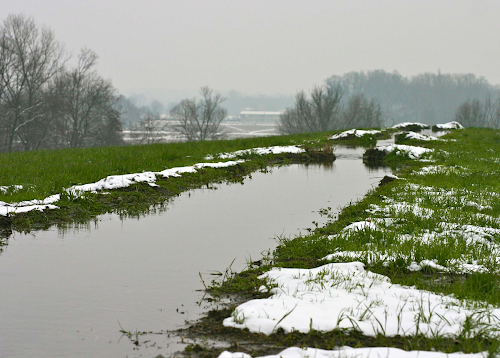WATER MEADOWS
Last semester, I had the privilege of embarking on the global studies component of my graduate school program in Italy. On our final day together, our group ventured to the outskirts of Milan to explore the water meadows located in The Ticino Valley Natural Park (Lombardo Parco delle Valle del Ticino) and Rural Park South Milan (Sud Parco Agricolo Milano). Despite the pouring rain, we traversed through the water meadows and had the opportunity to learn from Paola Branduini about their significant role in enhancing biodiversity.
Paola emphasized that water meadows have been proven to foster thriving ecosystems and provide support for a diverse array of species. These wetland farming practices have been employed by farmers for centuries to augment their agricultural production. Regrettably, the maintenance of water meadows demands considerable labor and effort. Over the years, many farmers have transitioned away from these traditional techniques to more conventional agricultural methods, despite the countless benefits they offer.
Thankfully, the inclement weather did not dampen our spirits. This firsthand experience left a lasting impression, fueling my curiosity to delve deeper into the subject of water meadows. I firmly believe that these ancient forms of floodplain management systems have the potential to serve as a valuable tool in combating biodiversity loss and mitigating the impacts of climate change.
The Water Meadow. (2018). History of an ancient peasant invention that speaks to the future of Italian agriculture. Retrieved from: https://ticinobiosource.it/wp-content/uploads/2018/12/Pubblication_The-Water-Meadow.pdf

Comments
Post a Comment